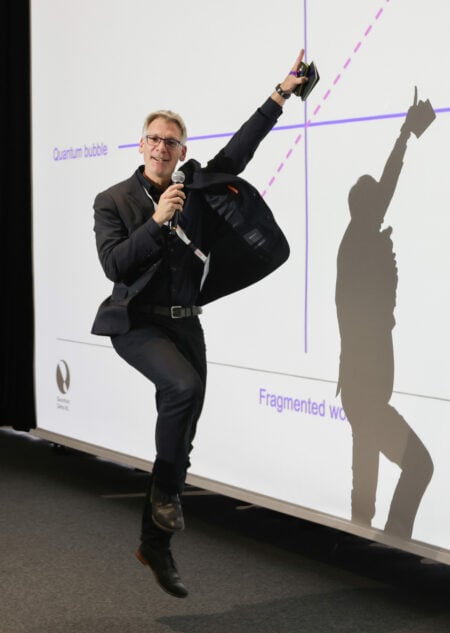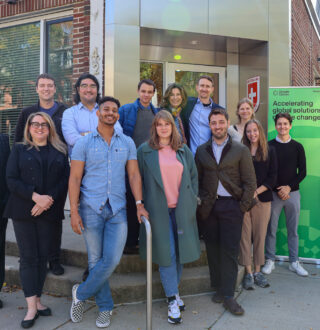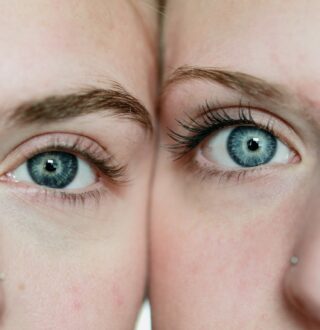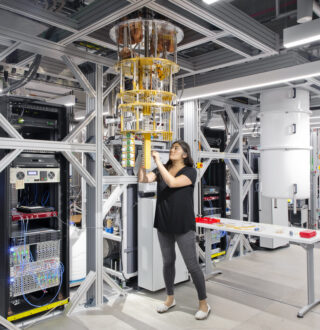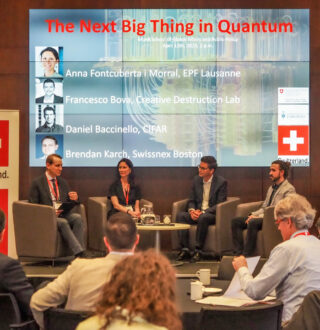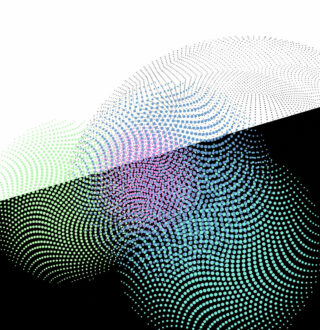Boston & New York
Our Mission
Connecting Tomorrow
Swissnex connects Switzerland and the world in education, research, innovation, and the arts. We work on some of the defining issues and most exciting developments of our time.
Learn More
Swissnex connects Switzerland and the world in education, research, innovation, and the arts. We work on some of the defining issues and most exciting developments of our time.
-
- Climate
- Health
- Quantum
- Cities
![]()
-
![]()
Latest News
-
![]()
Lens of Impact: Perspectives on Art and Design
April 3, 2024A new event series presented by Parsons’ School of Art and Design History and Theory and Swissnex in New York invites Swiss and US-based speakers to engage in a cross-cultural exchange on art and design practices.
-
![]()
Climate Collider: Spring 2024 Recap
April 2, 2024The second edition of the startup exchange program brought together Swiss and US startups in Boston and Houston for peer-to-peer learning and collaboration on the energy transition.
-
![]()
HEG-FR Group Investigates Innovation in Boston
March 28, 2024The study tour of Swiss EMBA students came to Boston in March to study sustainability and scalability in innovation.
-
![]()
Swiss Biotech in the Spotlight: 10 Startups Coming to Boston
March 27, 2024The Venture Leaders Biotech 2024 – members of the “Swiss National Startup Team” – will visit Boston on an innovation roadshow this May.
-
![]()
Climate Collider: Spring 2024 Cohort
February 22, 2024As part of the startup exchange program powered by Swissnex and Innosuisse, five Swiss energy startups are embarking on a journey to connect with climatetech innovators across the US.
-
![]()
International Panel on Quantum Talent in Washington
February 22, 2024This February, an event at Johns Hopkins University’s brand new Bloomberg Center in Washington brings together perspectives from the US, Switzerland, and Finland on the human capital behind quantum.
-
![]()
Zurich Researchers Forge Relationships on the East Coast
February 2, 2024Fourteen faculty and staff members from the Zurich University of Applied Sciences are traveling to Boston and New York in 2024 to conduct research and build connections with their peers in the US.
-
![]()
From Boston to Zurich: Shaping the Future of Food
January 24, 2024Harvard, Tufts, and WPI will be represented in the “Lake Week” festival at the Zurich University of Applied Sciences in Wädenswil this month.
-
![]()
Five Startups Creating the Future of Retail
December 19, 2023A group of Swiss startups is traveling to New York this January for NRF 2024, the world’s leading retail conference. From AI-based inventories to automated web design, discover how their creative technologies will shape tomorrow's commerce.
-
![]()
New Report: The Expanding Scope of Design
December 6, 2023A survey of 17 design leaders carried out by Swissnex and design studio Other Tomorrows examines critical shifts in the design landscape, from the rise of generative AI to pervasive environmental and climate concerns.
-
![]()
Climate Collider: First Edition Recap
November 13, 2023The startup exchange program brought together 10 Swiss and US startups this fall for peer-to-peer learning and collaboration in the fight against climate change.
-
![]()
New Mapping of Swiss Quantum Ecosystem
November 3, 2023Discover an overview of the major players and highlights of the Swiss quantum ecosystem, developed in the framework of Swissnex’s global initiative on quantum technology.
-
![]()
Swissnex Takes a Creative Turn in New York
October 31, 2023A decade after opening its first Manhattan office, Swissnex is moving to NeueHouse Madison Square, a creative hub in the Flatiron district, with a renewed focus on promoting Swiss innovation, arts, and creative industries.
-
![]()
Key Insights from the Swissnex Quantum Summit
October 30, 2023From the role of governments to the dangers of excessive hype, Swissnex’s flagship conference on quantum technology tackled a wide range of issues in this emerging industry.
-
![]()
Swissnex at the Quantum World Congress in Washington
September 27, 2023At an international forum, Swissnex joined a Swiss delegation to discuss how to best advance global strategic partnerships in quantum science and technology.
-
![]()
Swissnex at Climate Week NYC 2023
September 6, 2023Swissnex kicks off the new startup program Climate Collider and explores the future of green energy at the world’s largest climate event in New York City.
-
![]()
Robotics, Medtech, AI: 11 Swiss Startups to Explore the US Market
August 22, 2023The Innosuisse Internationalization Camps run by Swissnex in Boston and New York will give them the tools and connections they need to explore and enter the US market.
-
![]()
Climate Collider: Announcing Inaugural Startup Cohort
August 11, 2023From solar energy and sustainable materials to building analytics and green mobility, the participants in our new Swiss-US startup exchange program are advancing solutions to climate change in every aspect of our lives.
-
![]()
Marc Streit Joins as Head of Arts and Creative Industries
August 8, 2023Based in New York, the founder of the “zürich moves!” festival will draw on his extensive experience as a cultural entrepreneur to lead Swissnex’s initiatives at the interface of art, science, and technology across the American Northeast.
-
![]()
Meet the Future of Medicine: 10 Swiss Startups in Boston
July 28, 2023The Venture Leaders Medtech 2023 – members of the "Swiss National Startup Team” – will visit Boston on an innovation roadshow this September.
-
![]()
US Quantum Company IonQ to Establish Presence in Basel
July 5, 2023Through a new partnership with QuantumBasel, the prominent quantum computer manufacturer will open an innovation center and deploy next-generation systems at uptownBasel in Switzerland.
-
![]()
Switzerland Sets New Record at BIO 2023
June 5, 2023The Swiss Pavilion at the BIO International Convention, which is taking place in Boston from June 5 to 8, hosts a record number of 49 exhibitors, including more than 25 startups, showcasing the best of Swiss biotech.
-
![]()
Swissnex Launches Global Quantum Initiative From Boston
May 8, 2023Project Quantum connects Switzerland and the world in quantum science and technology through activities across the Swissnex network, including a flagship summit in Lausanne this October.
-
![]()
Showcasing 10 Swiss Biotech Startups in Boston
May 4, 2023The Venture Leaders Biotech 2023 – part of the “Swiss National Startup Team” – will visit Boston on an innovation roadshow this June.
-
![]()
Swiss-US Academic Relations Bolstered By New Dual Degree
May 2, 2023An agreement between the Zurich University of Applied Sciences and the Worcester Polytechnic Institute creates opportunities for international study and accreditation from both institutions.
-
![]()
Swissnex Hosts Reception for Quantum Innovators
May 1, 2023As part of the Quantum.Tech 2023 conference in Boston, Swissnex hosted a reception to connect Swiss quantum innovators with their colleagues from across the world.
-
![]()
Swissnex Explores The Future of Quantum in Toronto
April 19, 2023A Swiss-Canadian discussion at the University of Toronto’s Munk School of Global Affairs and Public Policy explored the economic promise of quantum science and innovation and potential for bilateral cooperation.
-
![]()
HEG-FR Deepens Ties with Suffolk University’s Sawyer Business School
April 6, 2023The business schools are collaborating on two one-week leadership programs in the Boston area this month. Thematic focus: impact and sustainability.
-
![]()
Climate Collider: New Startup Exchange Program
March 29, 2023Launched in partnership with Innosuisse, the four-week program will bring together 10 Swiss and US startups across Boston and New York this fall to accelerate global solutions to climate change.
-
![]()
Swissnex to Present on Quantum at AAAS 2023
February 28, 2023Brendan Karch will discuss models for international collaboration in quantum research at the conference in Washington, DC.
-
![]()
New US-Switzerland Quantum Symposium in Basel
February 27, 2023Taking place this March at uptownBasel, the conference will feature leading researchers from Switzerland and the US for a two-day deep dive into quantum technology.
-
![]()
Biotech, Food, AI: 11 Swiss Startups Coming to Boston and New York
February 20, 2023The Innosuisse Internationalization Camps run by Swissnex in Boston and New York will give them the tools and connections they need to explore the US market.
-
![]()
Zurich-Based University Extends Its Reach on the US East Coast
February 6, 2023Twelve experts from the Zurich University of Applied Sciences (ZHAW) will travel to Boston, New York, and Washington, DC, in 2023 to exchange knowledge and forge connections with American peers.
-
![]()
Nathalie Minder Joins as Head of Innovation in Boston and New York
February 2, 2023An experienced Swiss entrepreneur and an advocate for female founders, Nathalie is the latest addition to Swissnex’s innovation team in the US Northeast.
-
![]()
Go International with Startup Camps in the US Northeast
January 19, 2023Are you a Swiss startup ready to make the jump across the Atlantic? Applications are now open for Innosuisse’s internationalization camps run by Swissnex in Boston and New York. Apply by February 20, 2023.
For additional updates on our day-to-day activities, follow us on Linkedin
Discover

Events, news, and publications by Swissnex in Boston and New York.
Learn More




